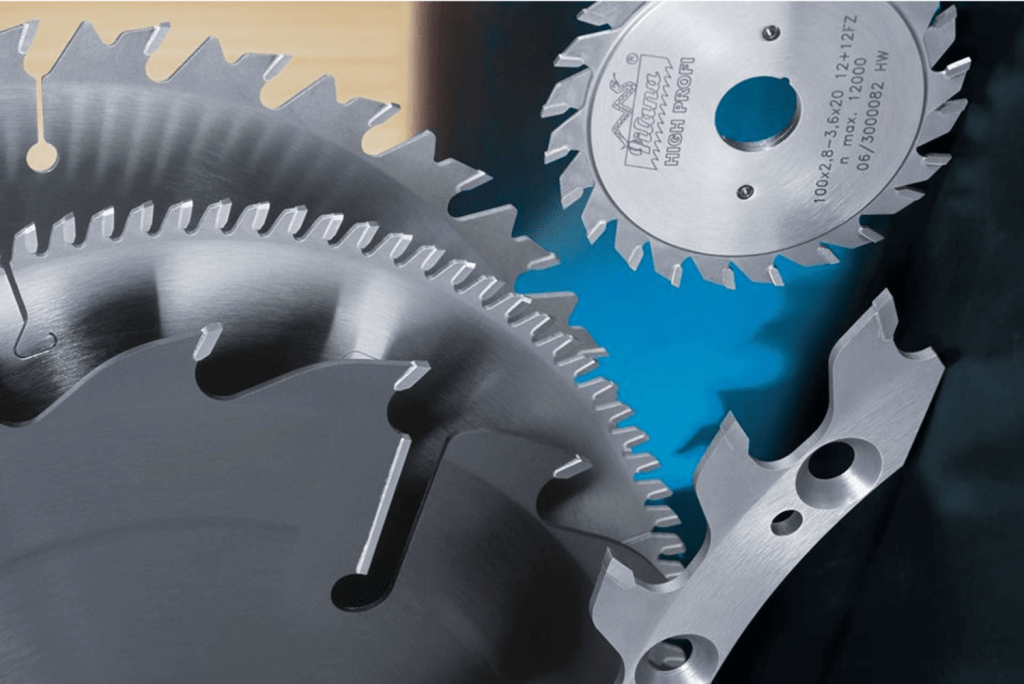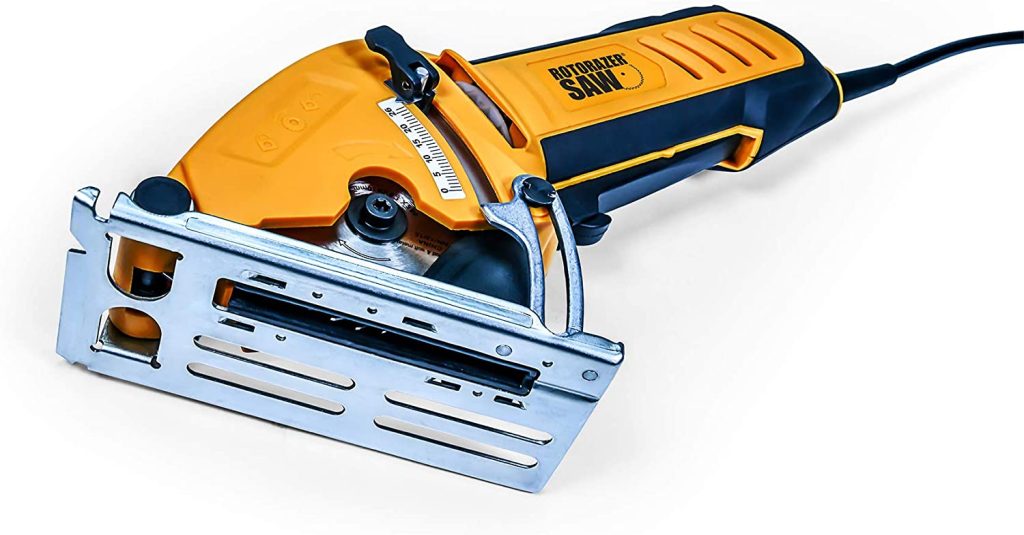When it comes to woodworking, having the right tools at your disposal is essential for achieving precision and efficiency in your projects. Among these tools, the circular saw blade stands out as a versatile and indispensable component, particularly when working with plywood. Designed to cut through a variety of materials with ease, a high-quality circular saw blade tailored for plywood can significantly enhance the quality of your cuts, reduce splintering, and improve overall workflow. Whether you are a professional carpenter, a seasoned DIY enthusiast, or a novice woodworker, understanding the nuances of selecting the appropriate circular saw blade is crucial for optimizing performance and achieving desired results. In this article, we will delve into the critical features to consider when choosing a circular saw blade specifically for plywood, including tooth configuration, kerf width, and material composition. Additionally, we will explore the benefits of using a dedicated plywood blade and offer tips on maintenance and care to ensure longevity and peak performance. By equipping yourself with the right blade, you can elevate your woodworking projects to new heights, making the circular saw blade an essential tool in your arsenal.
Understanding Circular Saw Blade Types
When selecting the appropriate blade for a circular saw, it is essential to consider both the material being cut and the desired finish. Blades come in various configurations, including general-purpose, fine-tooth, and specialty options, each designed to optimize performance for specific tasks. For example, a fine-tooth blade is ideal for creating smooth cuts in plywood or laminate materials, minimizing tear-out and splintering, while a general-purpose blade strikes a balance between cutting speed and finish quality, making it suitable for a range of applications.
Additionally, the construction of the blade plays a crucial role in its effectiveness. Blades can be categorized based on their tooth design, size, and the material they are made from, such as carbide-tipped for durability and longevity. The number of teeth on a blade also significantly influences its cutting capabilities; blades with fewer teeth allow for faster cuts but can produce rougher edges, while those with more teeth provide cleaner finishes at slower speeds. Therefore, understanding these characteristics enables users to make informed choices that enhance their cutting efficiency and achieve the desired results.
Different blade types suit specific plywood cutting needs and applications effectively.
the specific needs of the task at hand. For instance, a blade designed with a higher tooth count generally delivers smoother finishes, making it a preferred choice for detailed work such as cabinetry or furniture-making. Conversely, blades with a lower tooth count are better suited for quicker, rough cuts where finish quality is less critical. For specialized applications, such as cutting through thicker plywood or utilizing plywood in intricate designs, blades engineered with certain features, such as alternate top bevel (ATB) teeth, can enhance performance by reducing binding and promoting efficient chip removal.
Moreover, the intended application also dictates the choice of blade material and coating. Blades treated with anti-friction coatings not only decrease heat buildup during prolonged use but also extend the blade’s lifespan, making them advantageous for extensive cutting tasks. Understanding these distinctions allows woodworkers and DIY enthusiasts alike to select the right blade, ensuring optimal results whether for structural projects, fine woodworking, or detailed craftwork. By matching the blade type to the specific properties of the plywood and the requirements of the task, users can achieve superior results with efficiency and precision.
Importance of Tooth Count Selection
Selecting the appropriate tooth count is crucial for achieving the desired cutting performance and finish quality, as it directly influences the efficiency and effectiveness of the cutting process. A higher tooth count typically results in a finer cut, which is essential when working with materials that require precision and a clean edge. This is particularly important in applications like furniture making or cabinetry, where the visual appearance of the cut surface can significantly impact the overall aesthetic of the finished product. However, using a high tooth count blade for tasks that require speed can lead to overheating and reduced efficiency, emphasizing the need for careful consideration.
In contrast, lower tooth count blades excel in producing quicker, more aggressive cuts, ideal for rough breaks or initial cuts where finish quality is not the primary concern. They can effectively clear chips and debris, improving cutting speed in demanding situations. Understanding the relationship between tooth count and cutting characteristics allows users to tailor their blade choice to their specific project requirements, enhancing productivity and ensuring optimal results in woodworking and construction tasks.
Choosing the right tooth count ensures smooth cuts and minimizes splintering in plywood.
Selecting the optimal tooth count for cutting plywood is essential for achieving clean, smooth edges while minimizing the risk of splintering. Plywood, being a layered material, can easily chip if not cut properly. A blade with an increased tooth count is effective in creating finer cuts, allowing for a smoother finish that is particularly beneficial when the aesthetics of the edge are paramount. It provides a more gradual engagement with the material, reducing the chances of tearing the surface fibers and ensuring that the cut remains clean and precise.
Conversely, utilizing a blade with too few teeth may result in rougher cuts and increased splintering, as the aggressive cutting action can disturb the wood layers more violently. Therefore, a balanced approach is necessary; finding a blade that offers a moderate tooth count can facilitate both speed and finish quality, making it versatile for various plywood cutting tasks. This consideration not only enhances productivity but also significantly reduces the need for additional sanding or finishing work, streamlining the workflow in woodworking projects.
Blade Material and Durability Considerations
The choice of blade material significantly influences both performance and longevity during plywood cutting operations. High-speed steel (HSS) blades are known for their sharpness and ability to maintain an edge under moderate use, making them suitable for lighter cutting tasks. However, for more demanding applications, carbide-tipped blades provide superior durability and wear resistance, which is crucial when working with dense or thick plywood sheets. The carbide tips can withstand the heat generated from extended cutting sessions, ensuring that the blade remains effective over time and reducing the frequency of replacements.
Durability considerations extend beyond the material itself; factors such as blade thickness, design, and the presence of features like anti-vibration slots also play a role in performance. Thicker blades tend to be more stable and less prone to warping, which can lead to cleaner cuts. Additionally, blades engineered with features that minimize vibration can enhance precision and user comfort, providing a more controlled cutting experience. In sum, understanding blade material and design variations is essential for selecting a circular saw blade that not only meets immediate cutting needs but also stands the test of time in a variety of plywood applications.
Selecting high-quality materials enhances longevity and performance when cutting various plywood thicknesses.
The integration of high-quality materials in blade construction not only elevates cutting precision but also significantly extends the lifespan of the blade when tackling various plywood thicknesses. A well-constructed blade, often featuring high-grade carbide tips and robust body materials, is essential in minimizing wear and tear. Such blades are designed to maintain their sharpness longer, effectively reducing the need for frequent sharpening or replacement. This is particularly beneficial when cutting through thicker plywood, where the demands on the blade are considerably higher due to increased material resistance.
Furthermore, the attention to detail in material selection results in improved heat dissipation and reduced friction during operation. This characteristic is vital when making multiple or prolonged cuts, as excessive heat can lead to blade dulling and potential damage to both the blade and the workpiece. By investing in premium-quality blades designed for specific plywood applications, users can ensure consistent performance and reliability, ultimately enhancing productivity while maintaining high standards of workmanship throughout their projects.
Proper Blade Maintenance Techniques
Regular maintenance is crucial for ensuring optimal performance and longevity of saw blades. One effective technique involves keeping the blade clean and free from resin and pitch buildup, which can impair cutting efficiency. Utilizing a specialized blade cleaning solution or a mixture of warm water and mild detergent can help dissolve these residues. A soft brush or cloth should be employed to gently scrub the blade, followed by thorough rinsing and drying to prevent rusting.
Additionally, periodic sharpening is essential to maintain a blade’s cutting edge. Dull blades not only produce rough cuts but also place additional strain on the saw, leading to premature wear. It is advisable to use professional sharpening services or high-quality sharpening tools to ensure proper angle and consistency. Furthermore, storing blades in a protective environment, such as a dedicated case or blade guard, can prevent physical damage and corrosion. By adhering to these maintenance practices, the effectiveness and durability of the blade are significantly enhanced, ensuring precise and clean cuts in plywood projects.
Regular maintenance keeps your circular saw blade sharp and prolongs its lifespan during use.
practices, users can significantly enhance the performance of their saw blades, leading to more precise cuts and a reduction in the frequency of replacements. Ensuring that blades are regularly inspected for any signs of wear or damage allows for timely interventions, which can prevent larger issues from developing. In addition, maintaining the appropriate tension and alignment of the blade during use can minimize unnecessary stress, further extending its operational life.
Moreover, the choice of materials being cut plays a pivotal role in blade longevity. Using the right blade type for specific materials not only optimizes cutting efficiency but also reduces the risk of excessive wear. Employing sound cutting techniques, such as steady feed rates and avoiding binding, contributes to a blade’s overall durability. By integrating these practices into a regular maintenance routine, users can expect their saw blades to perform at peak efficiency while enjoying extended usability throughout various projects.
Safety Tips When Using Blades
When operating any cutting tool, it is crucial to prioritize personal safety to prevent accidents and injuries. Always wear appropriate personal protective equipment, such as safety glasses and gloves, to shield yourself from flying debris and sharp edges. To further mitigate risks, ensure that the workspace is clean and organized, removing any obstacles that could lead to slips or falls. It’s essential to maintain a firm grip on the tool and keep hands at a safe distance from the cutting area, employing push sticks or guides when necessary to maintain control over the material being cut.
Additionally, verifying that all safety guards and features of the equipment are in place and functioning correctly can greatly enhance user safety. Before making any adjustments or changing blades, always disconnect the power source to prevent accidental startups. Familiarizing oneself with the specific operating instructions and safety guidelines associated with the blade and tool not only fosters safer handling practices but also contributes to achieving optimal cutting performance. By adhering to these precautions, users can create a safer working environment while effectively utilizing their blades.
Following safety measures ensures a secure environment while operating circular saw blades effectively.
Strict adherence to established safety measures is vital for creating a secure work environment while utilizing cutting tools like circular saws. Implementing these protocols not only protects the operator but also enhances the overall efficiency of the cutting process. Ensuring that the workpiece is properly secured before initiating a cut helps prevent movement, which can lead to inaccurate cuts and potential accidents. Regularly inspecting the saw for any signs of wear or damage is essential, as it ensures optimal performance and reduces the likelihood of tool failure during operation.
Moreover, understanding the specific characteristics of the material being cut plays a significant role in ensuring safety. Different materials may require unique approaches, and being cognizant of these differences allows for better preparation and execution of cuts. Engaging in proper training and practice with circular saws will also lead to improved confidence and skill, further reducing the risk of mishaps. By integrating these safety practices into routine operations, operators create a culture of safety that not only protects individuals but also fosters a more productive working environment.
In conclusion, investing in a high-quality circular saw blade specifically designed for plywood is essential for achieving precise and clean cuts while ensuring the longevity of your tools. The right blade not only enhances the efficiency of your cutting tasks but also minimizes tear-out and splintering, resulting in a professional finish. As you embark on your woodworking projects, remember that the appropriate blade selection can make all the difference in the quality of your work. By prioritizing the right circular saw blade for plywood, you equip yourself with a vital tool that will elevate your craftsmanship and streamline your workflow for years to come.



